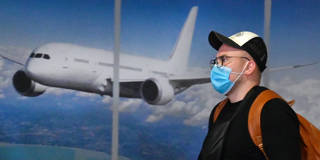To understand the increase in consumer price inflation around the world, one must look not only at supply and demand but also at the wedge that the coronavirus introduced between them. And now Russia’s war on Ukraine has added another source of inflationary pressure.
NEW HAVEN – Until a few years ago, major economies were struggling to achieve even mild inflation, with policymakers in the United States, the United Kingdom, and the eurozone struggling to meet their targets of 2% annual price growth. But with the arrival and persistence of COVID-19, the world changed dramatically. Two years later, everyone is worried about soaring inflation and how it can be contained.
The rates of consumer price inflation have varied across countries, reflecting their economic conditions and people’s expectations of future inflation. At the end of 2021, the US annual inflation rate was 4.7%, compared to 4.8% in the UK and 5% in the eurozone. A common feature is that inflation rates appear to be accelerating. Hence, after experiencing negative rates of inflation for much of the year, Japan’s month-to-month inflation rate in December 2021 had risen to 0.8%.
Why did inflation emerge during the pandemic, and under what conditions will it level out or even disappear? In general, inflation starts when demand for goods or services exceeds their supply. Demand-pull inflation typically occurs when demand is boosted by expansionary monetary or fiscal policies. In a simple demand-supply diagram, the downward sloping demand curve shifts up and to the right, and the equilibrium price and quantity both rise.

NEW HAVEN – Until a few years ago, major economies were struggling to achieve even mild inflation, with policymakers in the United States, the United Kingdom, and the eurozone struggling to meet their targets of 2% annual price growth. But with the arrival and persistence of COVID-19, the world changed dramatically. Two years later, everyone is worried about soaring inflation and how it can be contained.
The rates of consumer price inflation have varied across countries, reflecting their economic conditions and people’s expectations of future inflation. At the end of 2021, the US annual inflation rate was 4.7%, compared to 4.8% in the UK and 5% in the eurozone. A common feature is that inflation rates appear to be accelerating. Hence, after experiencing negative rates of inflation for much of the year, Japan’s month-to-month inflation rate in December 2021 had risen to 0.8%.
Why did inflation emerge during the pandemic, and under what conditions will it level out or even disappear? In general, inflation starts when demand for goods or services exceeds their supply. Demand-pull inflation typically occurs when demand is boosted by expansionary monetary or fiscal policies. In a simple demand-supply diagram, the downward sloping demand curve shifts up and to the right, and the equilibrium price and quantity both rise.